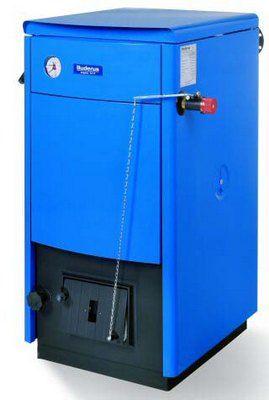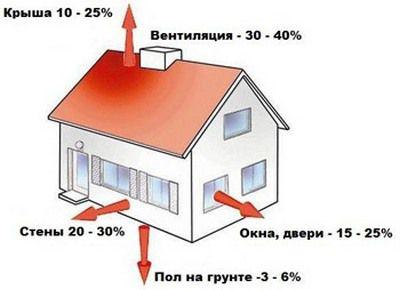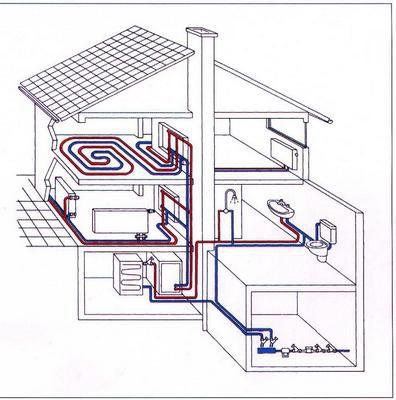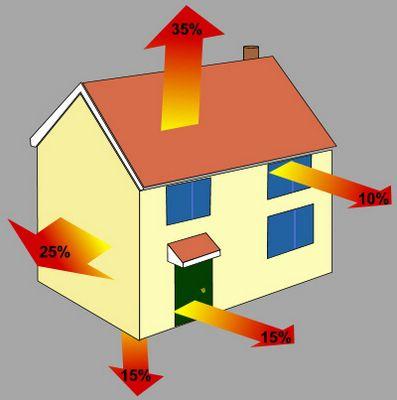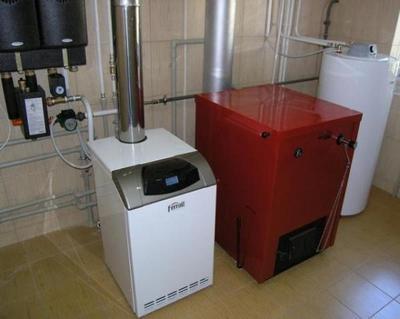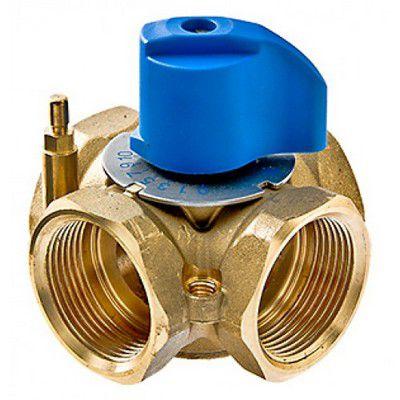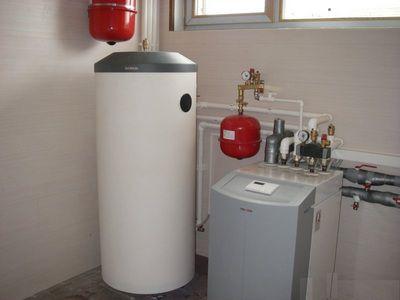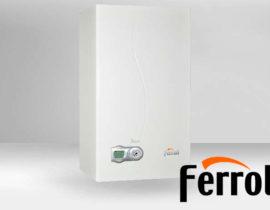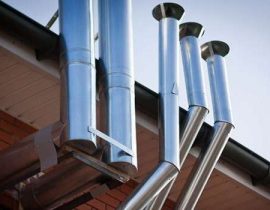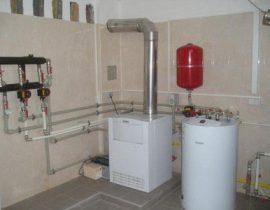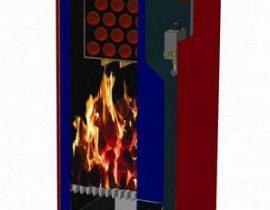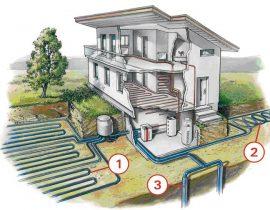The efficiency of the heating boiler depends on its power in relation to the area that it must heat. That's why the purchase of this device should take place only after a careful calculation of all its parameters, as well as a real assessment of the conditions in which it will be operated. If a ignore it, money, spent for the purchase of equipment, can be thrown to the wind — its power will not be enough to heat the house or, if she's redundant have to regularly overpay substantial sums.
To correctly calculate the power of the boiler, you need to use the developed methods with taking into account many factors, primarily thermal losses heated premises, it remains only to take into account all possible losses.
Content
What factors need to be taken into account when calculating the power of the boiler?
- The first thing you need to begin calculation — these are the premises of the house. You need to take into account all their characteristics, including volume and the area, the materials from which the structure was erected and the degree of its insulation.
- In addition, you need to calculate the sources of cold, which are the elements of the house, and without which it cannot do — doors and windows, floor, walls and roof, ventilation system.
- All these elements of construction or technical equipment retain heat in the premises in different ways, but each of them gives definite percentage of heat loss, depending on the material of its manufacture.
- An important role in calculations plays and the difference in air temperatures in the rooms of the dwelling and on the street — the lower abouton the outside the building, the faster the house cools down.
- The average winter temperature in the region where the building is located is also taken into account.
- If a boiler will be designed not only for heating, but also for heating water — This factor must also be taken into account calculations.
Armed with such indicators, it is possible to produce calculation and determine the power of the heating boiler in different ways.
Methods calculations
To correctly calculate the power of the boiler for heating a private house, you must first write down the parameters of your house and the region of residence.
According to the type of fuel, boilers are divided into:
- gas;
- electrical;
- solid fuel.
The easiest way to calculate boiler power
If you do not go into details and be sure that in the winter months you will not be left without heat in the house - just add to your calculations +50%. Let your boiler work at half its capacity rather than constantly being “at the limit” of its capabilities.
With a simple calculation, they measure the square of the house and multiply by a factor of 0.15.
For example:
You have a one-storey house with an area of 110 m2.
In order to correctly determine the power of the boiler, you just need to multiply this figure by 0.15.
We get: 110x0.15=16.5
We get that for a house with an area of 110 m2 you need a boiler with a capacity of 16.5 kW.
If simple methods are foreign to you and you want to get a little more confused, you need to move on to the next part of our article!
The second way to calculate the boiler power for a private house
It is a little more complex than the first one, since it takes into account many more factors, but it is also more accurate. In addition, you will not overpay for an overly powerful boiler, which, as it may turn out, you do not need.
Accurate computer calculation heat loss can be carried out by a specialist designer when drafting a house.
If a such calculations the project was not produced, then they can be done independently, if this applies to a private house with a small area. Wherein have to answer some questions:
- what material the walls are built from, and how thick they are;
- what is the general volume cubic capacity of the house;
- the presence of insulation and its thickness;
- the number of windows, their dimensions, the materials from which they are made (if these are double-glazed windows, then the number of cameras in them).
These questions are presented in a special questionnaire, which can be found on the Internet at specialized sites. It contains several answers to each question posed, depending on the choice of which will produced calculation power of the heating device for a particular house.
An approximately established coefficient that determines heat loss for the central Russian regions looks like this:
- for a building that does not have thermal insulation - 130—200 W/m²;
- for home 80—90s, having thermal insulation - 85—115 W/m²;
- for the construction of the beginning of the XXI century, with installed double-glazed windows - 55—75 W/m².
This coefficient is multiplied by the area of the entire structure and the number of heat losses is obtained. However, it cannot be said that based on these figures, you can get accurate results, since they are produced without accounting the region where the dwelling is located, the number and size of window openings and other factors on which heat losses directly depend.
More one way calculation heater power is calculation of the specific heating power of each room, which are summed up, and the desired value is obtained. This is done according to a formula in which the parameters are indicated by the following letters and numbers:
- boiler power - W;
- heating power per unit area in sq. meters - W1;
- the area of all heated rooms is ΣS.
The formula itself looks like this: W=ΣSxW1. To apply her in practice, you need to know the power required to heat one m².
It is also determined based on several factors:
- the average temperature in the area during the cold season;
- location of the room (internal or end room);
- number and size of windows;
- estimated number of heat sources;
- heat transfer resistance.
Such calculation quite complex, so it is better if it is produced specialists. But you need to think about whether it is worth doing this when the necessary indicators have already been entered in the design of any structure that take into account the climate of the region.
Therefore, you can operate using simplified method for determining the power of a heating device.
- In the simplest method counting Not everyone is valued separate factor and room, and a comprehensive assessment of the house is done.For this, a very simple formula has been developed 10 m2 = 1 toTue etcand ceiling heights from 2.6 to 3,1m. That is, for every 10 sq. meters of area power required 1 kWif the ceiling height is not higher than 3—3,1m.
For example, a house of 250 sq. meters will require for high-quality heating boilerhaving a power of at least 25 kW (250 : 10 = 25)
For each region, the value of the power factor is calculated, which takes into account the climate at the location of the dwelling. The product of it and the area of \u200b\u200bthe house will also be a number that indicates the power of the boiler.
If a power value of such a rating is obtained, boilers with which do not produce, so you need to purchase a heater, which the will be closest to the calculated value, it is better if the boiler power exceeds the required.
Using this method calculation, you need to know that it is convenient for its simplicity, but not gives accurate result for buildings with complex architecture. Therefore, if you want to do calculation for such buildings, it would be better to entrust this work to specialists.
Finding the perfect balance between power and economy
To follow the principles savings, must be taken into account more some points during the operation of the boiler.
In cold weather, the temperature in the house must be maintained at 20—22 degrees, it is optimally comfortable for the human body. But considering that during the winter the temperature changes, and the frostiest days occur only a few times during the heating season, you can warm the house using boiler, having a power half lower than that obtained with calculations.
For the normal functioning of the boiler for many years, it is better if it works with nominal, and not with peak power. But during the heating period, the need to maintain a high temperature in the house sometimes disappears. To get out of this situation, mixing valves.
They are needed in order to be able to regulate the temperature of the coolant in the batteries. For this, hydraulic systems with thermo-hydraulic distributors or with four-way valves are used. If they are installed in the heating system, the temperature can be changed with the regulator, leaving the boiler output constant.
After these upgrades boiler even a small power will work in the optimal mode, sufficient for high-quality heating of all rooms. This solution is quite expensive, but it will help save on fuel consumption.
- Another case when boiler has an excess for given capacity, and I don’t want to overpay for excess fuel, which should ensure its operation. To avoid these unpleasant expenses, you can install a buffer tank (accumulator tank), which is completely filled with water.
This addition will be in place, if boilers are used for heating solid fuel — the appliance will operate at full capacity, even if only short-term heat is required.
When the temperature rises outside and boiler turn off more early, the automatic valve begins to limit the flow of heated water into the batteries. He directs her into the buffer tank heat exchanger, and there it will heat the water that is already in the tank. Volume tank should be 10:1 in relation to the area of \u200b\u200bthe house, for example, for 50 square meters of area you will need a tank volume in 500 liters.
This water, having warmed up, begins to function after cooling the water in the circuit. — it begins to flow into the radiators, and the system will continue to heat the premises more for a while.
Video: Determining the power of the heating system as a whole and its elements
By choosing a method calculation boiler power, you can additionally get advice from specialists in order to purchase the device for sure. Based on the data obtained from calculations, you can save funds when buying a heating boiler and during its operation.

